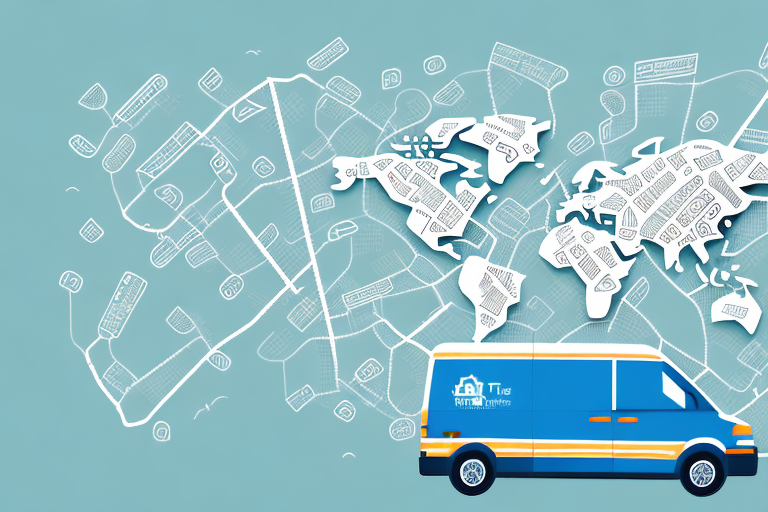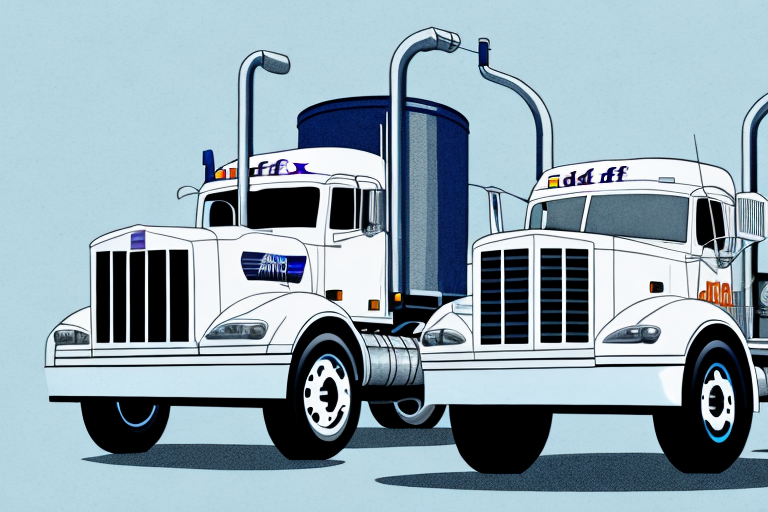Importance of an Effective Delivery Schedule
In the fast-paced world of delivery services, creating an effective schedule is essential for meeting customer expectations, streamlining operations, and boosting profitability. A well-organized schedule not only ensures timely deliveries but also enhances overall business performance.
Accurate Delivery Times and Customer Satisfaction
Providing reliable delivery times builds trust with customers, especially those with time-sensitive needs. According to a 2023 industry report, companies with precise scheduling have a 20% higher customer satisfaction rate.
Operational Efficiency and Cost Reduction
Optimizing delivery routes and schedules can significantly reduce fuel costs and operational expenses. By minimizing travel time, businesses can save approximately 15% on fuel costs annually, as noted in the Logistics Efficiency Report.
Enhanced Coordination Across Departments
A structured delivery schedule facilitates better communication between the delivery team and other departments, such as customer service and inventory management. This coordination helps in promptly addressing delays or rescheduling needs, ensuring seamless operations.
Key Factors in Creating a Delivery Schedule
Developing an effective delivery schedule involves considering multiple factors to ensure reliability and efficiency.
Type of Goods and Delivery Requirements
The nature of the goods being delivered influences scheduling. Perishable items like food and medical supplies require expedited delivery, whereas non-perishable items may have more flexible time frames.
Delivery Distance and Time Considerations
Understanding the distance and expected delivery times helps in planning optimal routes. Long-distance deliveries may require different scheduling strategies compared to local deliveries.
Driver Availability and Resource Management
Assessing the number of available drivers and their working hours is crucial. Ensuring that drivers are not overburdened can lead to better performance and reduced turnover rates.
Technology and Tools for Scheduling
Utilizing advanced scheduling software can automate route planning, track deliveries in real-time, and analyze performance data. Tools like those offered by ShipScience can enhance scheduling accuracy and efficiency.
Weather and External Factors
Monitoring weather forecasts and having contingency plans are essential for handling unexpected delays. Adverse weather conditions can significantly impact delivery times and route safety.
Types of Delivery Schedules
There are various scheduling models that businesses can adopt based on their specific needs and operational dynamics.
Fixed Schedules
Fixed schedules involve regular, repetitive deliveries to the same customers. This model is ideal for businesses with consistent delivery patterns and a stable customer base.
Flexible Schedules
Flexible schedules accommodate variable pickup and delivery times, allowing businesses to adjust based on demand fluctuations and unexpected changes.
On-Demand Schedules
On-demand schedules enable customers to request deliveries at any time, providing high flexibility but potentially increasing operational costs. This model is suitable for businesses offering urgent or time-sensitive delivery services.
Hybrid Schedules
Hybrid schedules combine elements of fixed and flexible models, allowing for regular deliveries while also accommodating on-demand requests. This approach offers a balance between reliability and adaptability.
Optimizing Delivery Scheduling with Technology
Leveraging technology is pivotal in enhancing the efficiency and accuracy of delivery schedules.
Scheduling Software and Automation
Automated scheduling software can handle repetitive tasks, such as route planning and driver assignments, freeing up time for more strategic activities. Automation reduces the likelihood of human error and increases scheduling precision.
Real-Time Tracking and Data Analysis
Real-time tracking systems provide visibility into delivery progress, allowing for timely interventions in case of delays. Data analysis helps in identifying patterns and areas for improvement, leading to more informed decision-making.
Integration with Other Systems
Integrating scheduling software with inventory management and CRM systems offers a comprehensive view of operations. This integration facilitates seamless data flow and enhances overall business coordination.
Prioritizing Deliveries and Route Optimization
Effective prioritization and route optimization are key to maintaining delivery efficiency and meeting customer expectations.
Assessing Urgency and Distance
Classifying deliveries based on urgency and distance helps in prioritizing tasks. High-priority deliveries, such as same-day shipments, should be scheduled first, followed by less urgent ones.
Optimizing Routes with Technology
Using GPS and advanced algorithms, businesses can plan the most efficient routes, reducing travel time and fuel consumption. Tools like RouteOptimizer can significantly enhance route planning.
Vehicle Selection and Efficiency
Choosing the right type of vehicle for each delivery route can improve efficiency. Smaller vehicles are ideal for urban deliveries, while larger trucks are better suited for bulk or long-distance deliveries.
Managing Unexpected Delays and Communication
Despite meticulous planning, unexpected delays can occur. Effective management and communication strategies are essential to handle such situations.
Contingency Planning
Having backup plans, such as reserve drivers and alternative routes, ensures that deliveries can proceed even when unforeseen issues arise.
Customer Communication Strategies
Transparent communication with customers about delays and providing updated delivery times helps maintain trust and satisfaction. Implementing automated notifications via SMS or email can keep customers informed in real-time.
Evaluating and Improving Delivery Schedules
Continuous evaluation of delivery schedules is necessary to identify areas for improvement and ensure sustained efficiency.
Performance Metrics and Analytics
Tracking metrics such as on-time delivery rates, missed deliveries, and driver performance provides insights into scheduling effectiveness. Regular analysis helps in making data-driven adjustments.
Driver Management and Accountability
Establishing clear performance expectations and providing regular feedback ensures that drivers remain accountable and motivated to maintain high standards.
Balancing Customer Demands with Efficiency
Finding the right balance between meeting customer demands and maintaining operational efficiency is crucial. This involves optimizing routes, managing driver workloads, and ensuring high service quality.
Future Trends in Delivery Service Scheduling and Logistics
The delivery industry is continually evolving with advancements in technology and changing consumer behaviors. Staying ahead of these trends is vital for maintaining competitive advantage.
Artificial Intelligence and Predictive Analytics
AI-driven tools can predict delivery demand patterns, optimize routes in real-time, and enhance decision-making processes. Predictive analytics can forecast potential delays and suggest proactive solutions.
Automation and Robotics
Automation in warehousing and last-mile delivery, including the use of drones and autonomous vehicles, is set to revolutionize the delivery landscape by increasing speed and reducing costs.
Sustainable Delivery Practices
With growing environmental concerns, businesses are adopting sustainable delivery practices, such as using electric vehicles and optimizing routes to minimize carbon footprints.
Integration of Omnichannel Retail
The rise of omnichannel retail requires seamless integration of online and offline delivery processes, ensuring that customers receive a consistent and efficient shopping experience across all platforms.
Case Studies: Examples of Successful Delivery Schedules in Different Industries
Examining successful delivery schedules across various industries provides valuable insights and best practices that can be applied to different business models.
Medical Industry Deliveries
In the medical sector, timely deliveries are critical. Companies like MedExpress prioritize on-time deliveries to ensure that essential medical supplies reach healthcare facilities without delay.
Perishable Goods Delivery
Businesses delivering perishable goods, such as grocery services, focus on speed and route efficiency to maintain product freshness. Implementing cold chain logistics ensures that products remain viable upon arrival.
E-commerce Deliveries
E-commerce giants like ShopFast utilize advanced scheduling and real-time tracking to manage high volumes of deliveries, ensuring customer satisfaction through timely and reliable service.
Common Mistakes to Avoid When Creating a Delivery Schedule
Even with the best intentions, certain mistakes can hinder the effectiveness of a delivery schedule. Awareness and avoidance of these pitfalls are essential for maintaining efficient operations.
Failing to Account for Peak Delivery Times
Ignoring peak periods can lead to overwhelmed drivers and delayed deliveries. Properly forecasting and planning for high-demand times ensures smoother operations during busy seasons.
Overloading Drivers with Deliveries
Assigning too many deliveries to a single driver can result in fatigue, mistakes, and decreased performance. It's important to balance workloads to maintain driver well-being and delivery accuracy.
Poor Communication of Delivery Times
Unclear or inconsistent communication regarding delivery schedules can lead to customer frustration and missed deliveries. Implementing robust communication channels ensures that customers are well-informed.
Lack of Contingency Plans
Not having backup plans for unexpected disruptions can exacerbate delays. Developing comprehensive contingency strategies helps mitigate the impact of unforeseen events on delivery schedules.
Conclusion
Creating an effective delivery schedule requires a strategic approach that incorporates accurate planning, technology integration, and continuous evaluation. By addressing key factors, leveraging advanced tools, and maintaining clear communication, businesses can optimize their delivery operations to meet customer demands and enhance overall efficiency.




















